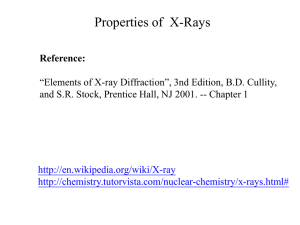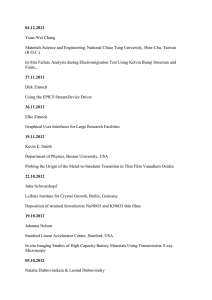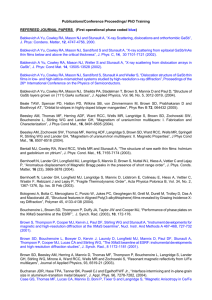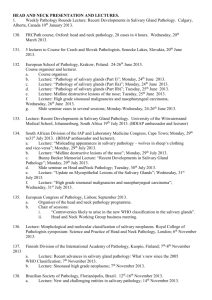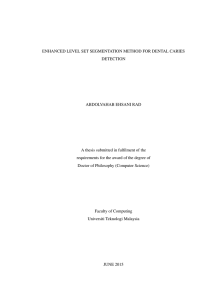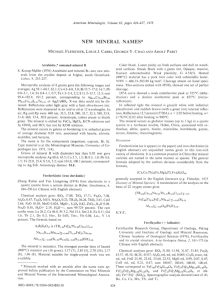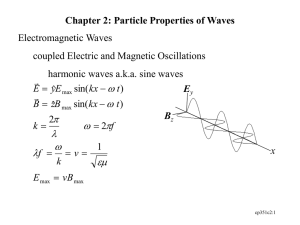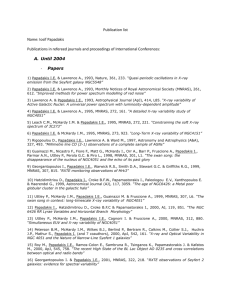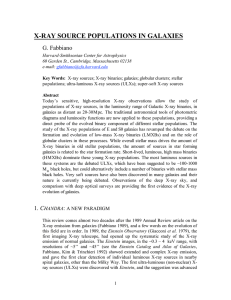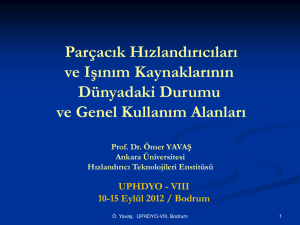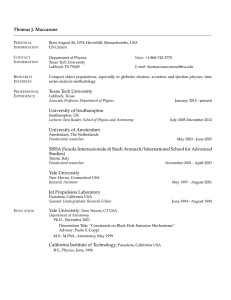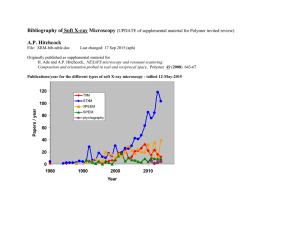Gianoncelli
advertisement
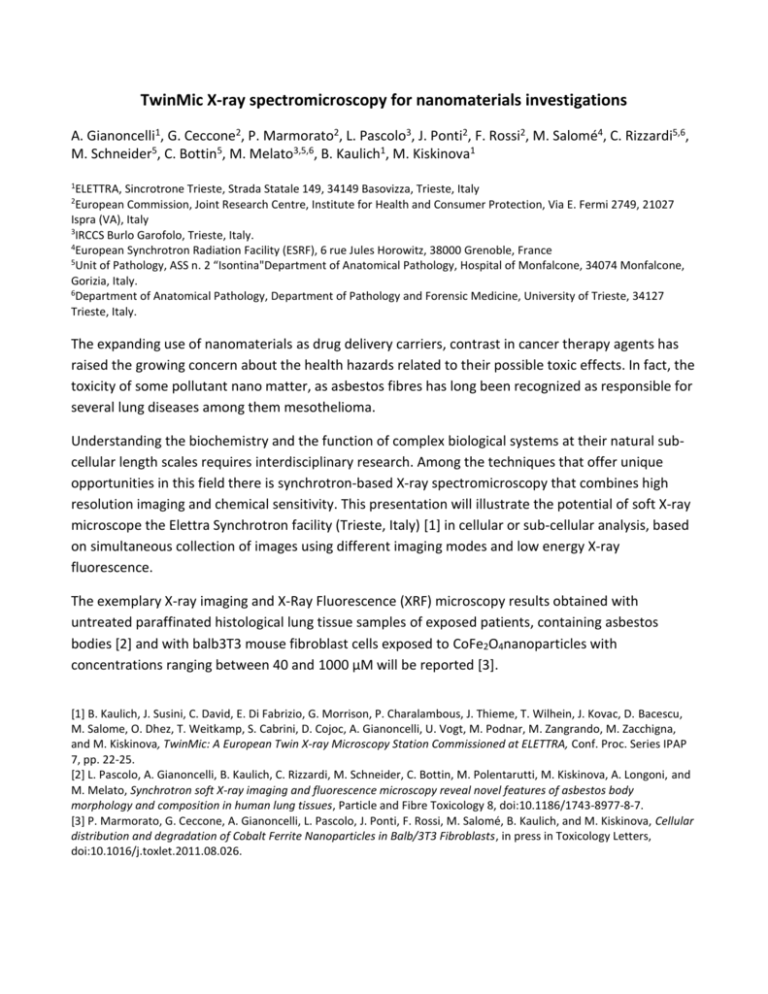
TwinMic X-ray spectromicroscopy for nanomaterials investigations A. Gianoncelli1, G. Ceccone2, P. Marmorato2, L. Pascolo3, J. Ponti2, F. Rossi2, M. Salomé4, C. Rizzardi5,6, M. Schneider5, C. Bottin5, M. Melato3,5,6, B. Kaulich1, M. Kiskinova1 1 ELETTRA, Sincrotrone Trieste, Strada Statale 149, 34149 Basovizza, Trieste, Italy European Commission, Joint Research Centre, Institute for Health and Consumer Protection, Via E. Fermi 2749, 21027 Ispra (VA), Italy 3 IRCCS Burlo Garofolo, Trieste, Italy. 4 European Synchrotron Radiation Facility (ESRF), 6 rue Jules Horowitz, 38000 Grenoble, France 5 Unit of Pathology, ASS n. 2 “Isontina"Department of Anatomical Pathology, Hospital of Monfalcone, 34074 Monfalcone, Gorizia, Italy. 6 Department of Anatomical Pathology, Department of Pathology and Forensic Medicine, University of Trieste, 34127 Trieste, Italy. 2 The expanding use of nanomaterials as drug delivery carriers, contrast in cancer therapy agents has raised the growing concern about the health hazards related to their possible toxic effects. In fact, the toxicity of some pollutant nano matter, as asbestos fibres has long been recognized as responsible for several lung diseases among them mesothelioma. Understanding the biochemistry and the function of complex biological systems at their natural subcellular length scales requires interdisciplinary research. Among the techniques that offer unique opportunities in this field there is synchrotron-based X-ray spectromicroscopy that combines high resolution imaging and chemical sensitivity. This presentation will illustrate the potential of soft X-ray microscope the Elettra Synchrotron facility (Trieste, Italy) [1] in cellular or sub-cellular analysis, based on simultaneous collection of images using different imaging modes and low energy X-ray fluorescence. The exemplary X-ray imaging and X-Ray Fluorescence (XRF) microscopy results obtained with untreated paraffinated histological lung tissue samples of exposed patients, containing asbestos bodies [2] and with balb3T3 mouse fibroblast cells exposed to CoFe2O4nanoparticles with concentrations ranging between 40 and 1000 µM will be reported [3]. [1] B. Kaulich, J. Susini, C. David, E. Di Fabrizio, G. Morrison, P. Charalambous, J. Thieme, T. Wilhein, J. Kovac, D. Bacescu, M. Salome, O. Dhez, T. Weitkamp, S. Cabrini, D. Cojoc, A. Gianoncelli, U. Vogt, M. Podnar, M. Zangrando, M. Zacchigna, and M. Kiskinova, TwinMic: A European Twin X-ray Microscopy Station Commissioned at ELETTRA, Conf. Proc. Series IPAP 7, pp. 22-25. [2] L. Pascolo, A. Gianoncelli, B. Kaulich, C. Rizzardi, M. Schneider, C. Bottin, M. Polentarutti, M. Kiskinova, A. Longoni, and M. Melato, Synchrotron soft X-ray imaging and fluorescence microscopy reveal novel features of asbestos body morphology and composition in human lung tissues, Particle and Fibre Toxicology 8, doi:10.1186/1743-8977-8-7. [3] P. Marmorato, G. Ceccone, A. Gianoncelli, L. Pascolo, J. Ponti, F. Rossi, M. Salomé, B. Kaulich, and M. Kiskinova, Cellular distribution and degradation of Cobalt Ferrite Nanoparticles in Balb/3T3 Fibroblasts, in press in Toxicology Letters, doi:10.1016/j.toxlet.2011.08.026.
